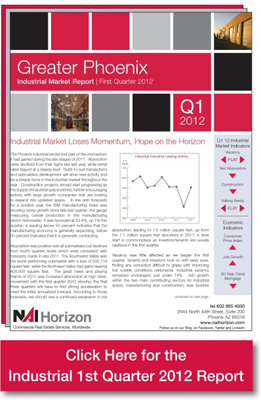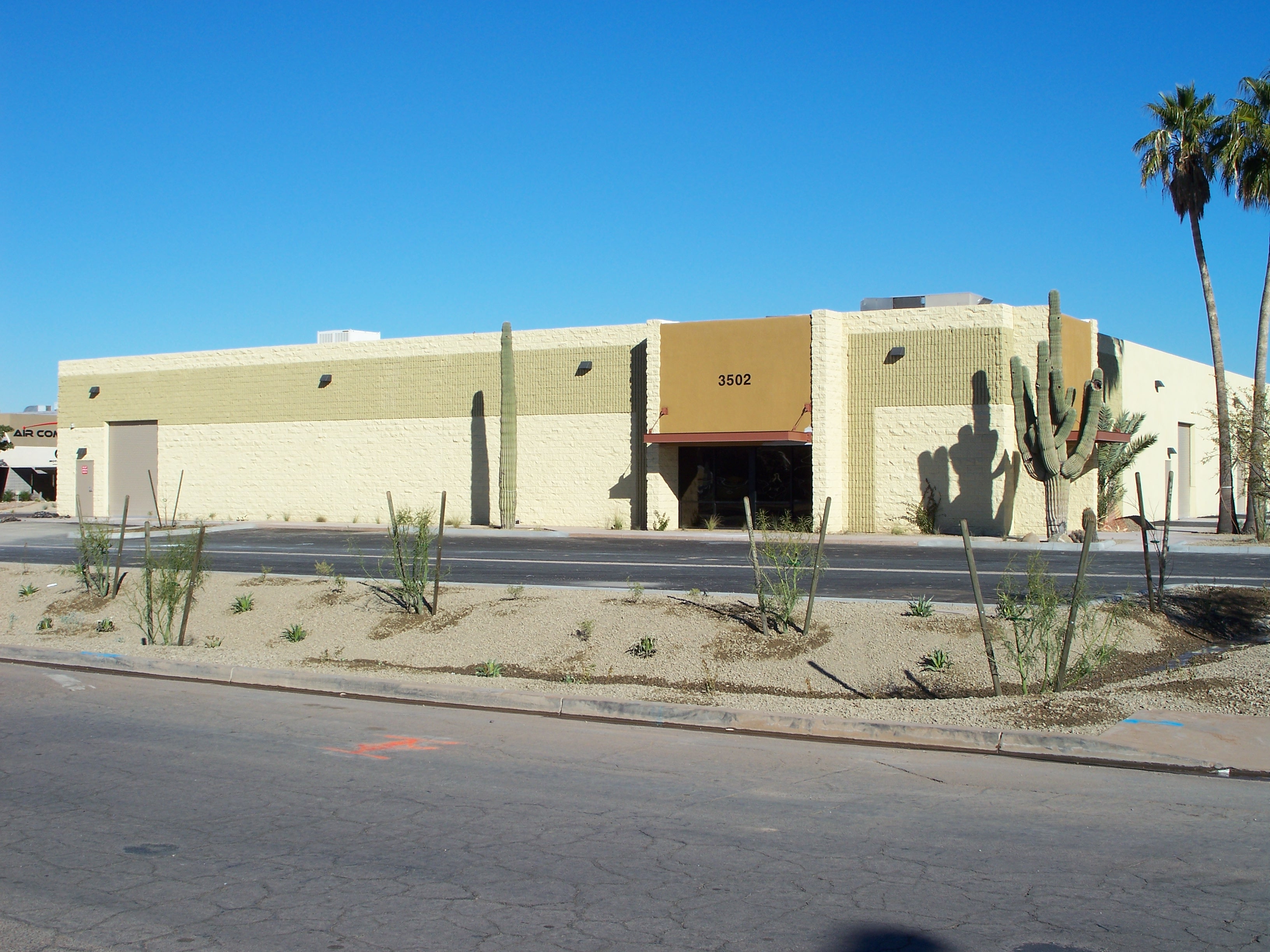The Phoenix industrial sector lost part of the momentum it had gained during the late stages of 2011. Absorption rates declined from their highs late last year, while rental rates stayed at a steady level. Build-to-suit transactions and speculative development will drive new activity and be a steady force in the industrial market throughout the year. Construction projects should start progressing as the supply of industrial space shrinks, further encouraging activity with large growth companies that are looking to expand into updated space. In line with forecasts for a positive year, the ISM manufacturing index was showing some growth since late last quarter; the gauge measuring overall production in the manufacturing sector nationwide. It was recorded at 53.4%, up 1% this quarter; a reading above 50 percent indicates that the manufacturing economy is generally expanding; below 50 percent indicates that it is generally contracting.
Absorption was positive over all submarkets but declined from fourth quarter, levels which were consistent with forecasts made in late 2011. The Southwest Valley was the worst performing submarket with a loss of 505,118 square feet, while the Northeast Valley had gains nearing 400,000 square feet. The great news and playing theme of 2011 was increased absorption at high rates.However, with the first quarter of 2012 slowing, the final three quarters will have to find strong acceleration to meet the initial annualized forecast. According to those forecasts, we should see a continued expansion in net absorption, leading to 7.5 million square feet, up from the 7.1 million square feet absorbed in 2011; a slow start is commonplace as investors/tenants are usually cautious in the first quarter.
Vacancy was little affected as we began the first quarter. Tenants and investors look on with wary eyes, finding any conviction difficult to grasp with improving but volatile conditions nationwide. Industrial vacancy remained unchanged, just under 14%. Job growth within the two main contributing sectors for industrial space, manufacturing and construction, was positive but fleeting. Flex space has persisted to record the highest vacancy rates averaging out around 20.5%; it has remained above 20% for the past three years. This property type will struggle against the subdued pricing of lower class industrial and office space properties. We hope to see business growth improving with low borrowing costs, green technology incentives, and a turnaround from one of the deepest recessions. If we continue to push forward, estimates surmise that up to 5 million square feet of vacant space throughout the year should be absorbed by tenants who are more confident in their business sectors. The first quarter showed that there was an increase in properties under construction; totaling up to approximately 3.4 million square feet. This will support expected new job creation and provide for an increase in class A highly desirable, first generation space.
Rental rate averages remained level with the average rate being at $0.49 per month, and we should continue to see average industrial rents unchanged, or have slight improvements as demand in the industrial sector increases. However, with a limited supply of large box space, and increased foreign investment nationwide, rents may find the effort to edge up. Additionally, a larger circulation of goods paired with increased economic activity will benefit the industrial sector as warehouse space will be in greater demand. The first quarter gave way to nearly 560,000 square feet of completed space, and approximately 3.3 million square feet of industrial space was under construction. The submarket with the highest addition was the Southeast Valley, with 2.2 million square feet of manufacturing space. We will need to see drastic improvement in rental rates to compensate for the declines experienced over the last four years, but moving in a positive direction is the momentum the market needs.
Consumer spending has already shown signs of improvement, albeit at a slow pace. Large movements of capital will be reserved after elections take place late in the year, and investor confidence will be restored if constructive outcomes are reached. The quarter was marked with passive, but improving job growth, coupled with a declining unemployment rate throughout Metropolitan Phoenix. The largest transaction seen in the first quarter was MiTek Industries acquiring roughly 260,000 square feet of warehouse space at 7890 W Lincoln. The quarter’s largest sale transaction was a purchase of a 3 property portfolio for $18,325,000 by Alliance Commercial Partners.


